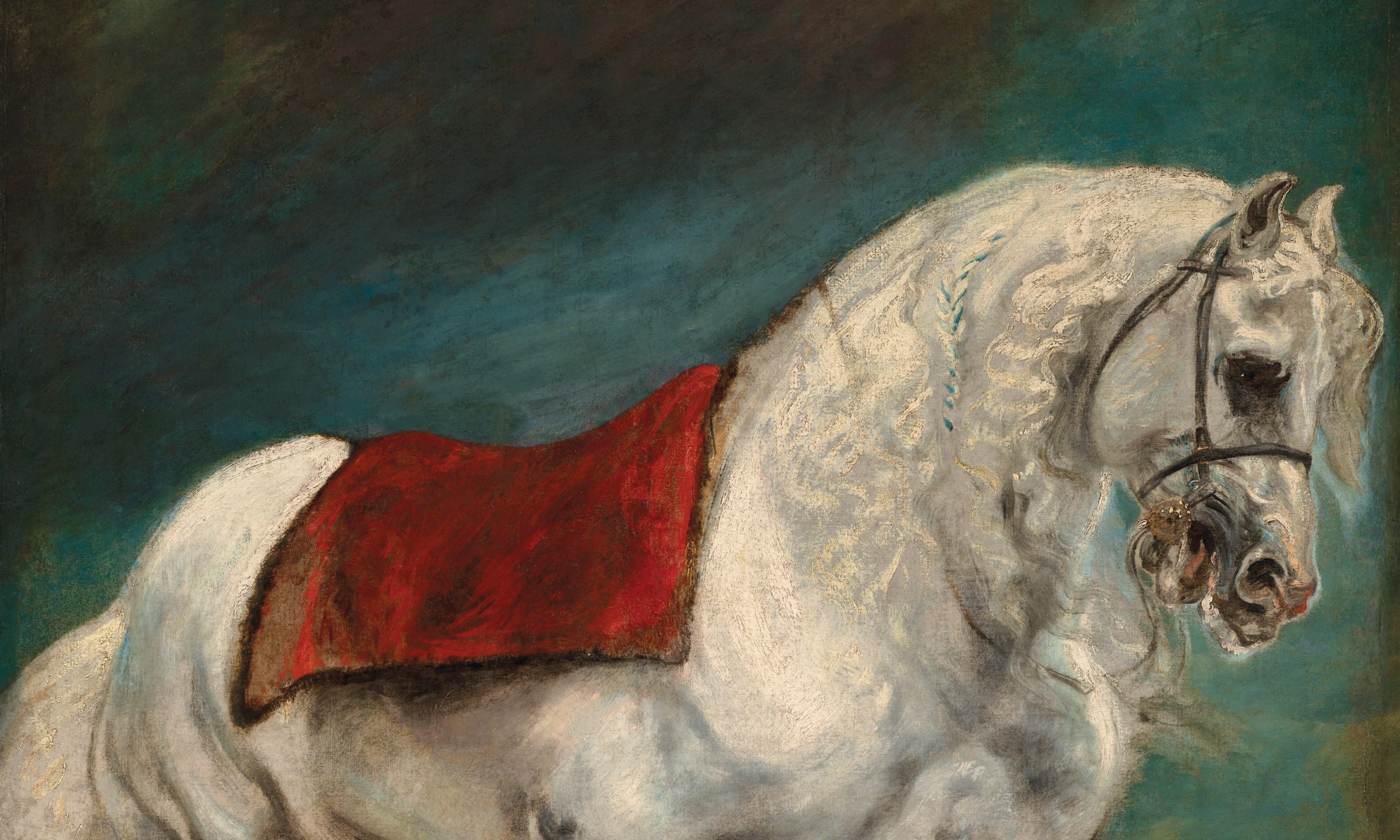An Andalusian Horse was painted around 1621
Courtesy of Christie's
When the owners of this painting by Anthony Van Dyck bought it from Christie’s in 2000, they thought they were buying a picture of a horse. But it was more than that—shortly afterwards, when removing the relining canvas, a conservator discovered there was another painting on the reverse, a rare landscape study.
This December, the double-sided study will return to Christie’s, offered with a £2m to £3m estimate in the Old Masters Part I Sale on 3 December in London.
An Andalusian Horse was painted in Antwerp, shortly before Van Dyck left for Italy in the autumn of 1621. It is a study for a painting of the Emperor Charles V, now in the Uffizi Gallery in Florence, which was painted around 1621 and is the earliest surviving equestrian portrait by the artist. Van Dyck’s love of horses is evident in this spontaneous, flamboyantly painted study—according to André Félibien’s 1685 biography of the artist, when his gifted student was leaving for Italy, Rubens gave Van Dyck one of the most beautiful horses from his stable.
When the relining was removed in the early 2000s, an X ray of the study showed that Van Dyck originally painted a rider on the horse, which was later removed. This prompted the Van Dyck scholar Oliver Millar, when writing about the rediscovered landscape study in the Burlington Magazine in 2002, to leave open the possibility that this could, in fact, have been an earlier version of the Uffizi portrait, not merely a preparatory study.
The uncovered landscape study
Courtesy of Christie's
Following the Christie’s sale in 2000, the two-sided study—once in the collection of the artist and collector Thomas Gambier Parry (1816-88) at Highnam Court, near Gloucester—was included in the 2004 catalogue raisonné of Van Dyck’s works, compiled by Susan J. Barnes, Oliver Millar, Nora de Poorter and Horst Vey. They deemed it to be the artist’s earliest grand-scale depiction of a lone horse and the only surviving landscape in oil—though five other landscapes were recorded in Antwerp collections in the 17th century, their whereabouts is now unknown.
The loosely painted rediscovered landscape shows a tree-lined bank sloping down to a pond, where a dog drinks. It was connected, by Millar in his Burlington Magazine article of 2002, to the background in his Portrait of a father and son, possibly Joannes Woverius with his son (around 1620) which is now in the Musée du Louvre.
“There is strong demand for Flemish Baroque paintings, especially those by Rubens and Van Dyck—a number of our key collectors are active in that field,” says Clementine Sinclair, Christie’s head of London Old Master paintings. In 2000, the painting sold for £773,750, (with fees). Twenty four years later and “now it has the added significance of the landscape on the reverse,” Sinclair says. “There is a market comparison in a painting of a rearing horse, which we sold in New York in January 2012 for around $2.5m. That’s the most comparable work that’s been on the market since this study was sold in 2000.”
The oil on canvas, which measures 132cm by 106cm, has been consigned by a private European collector and is not guaranteed, yet.

